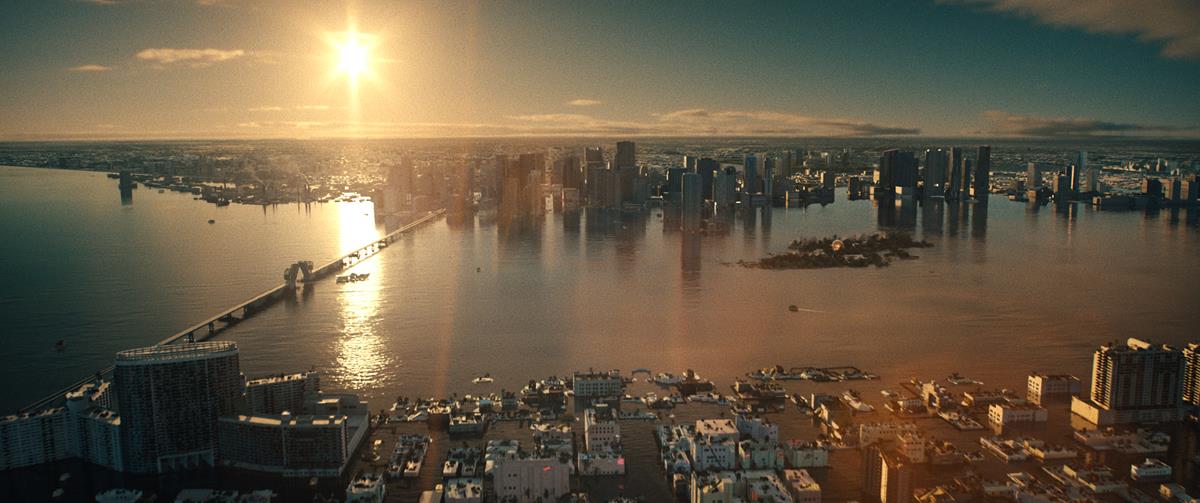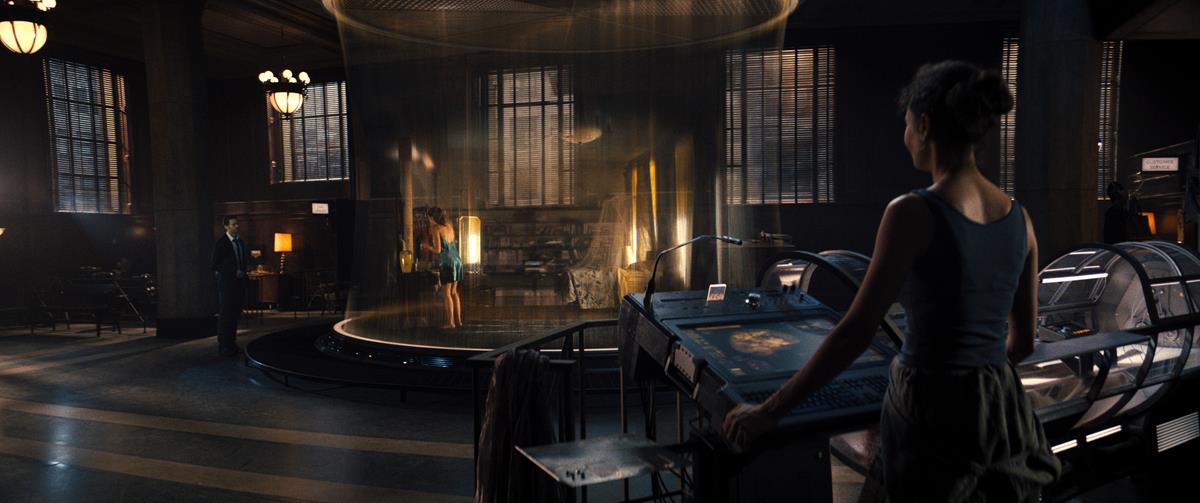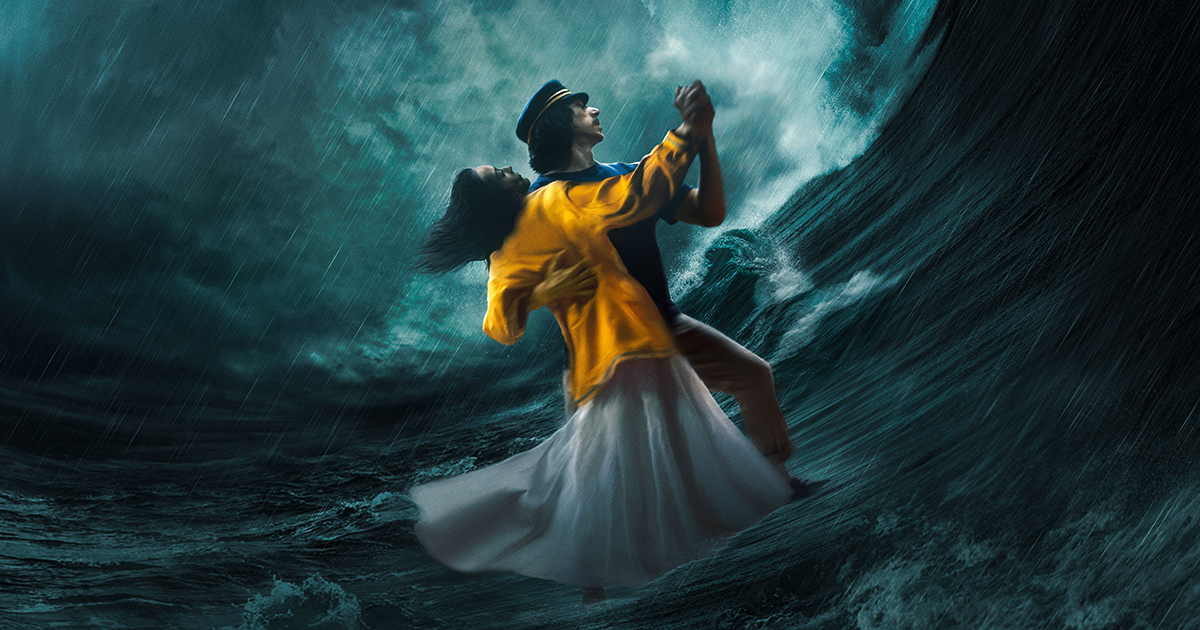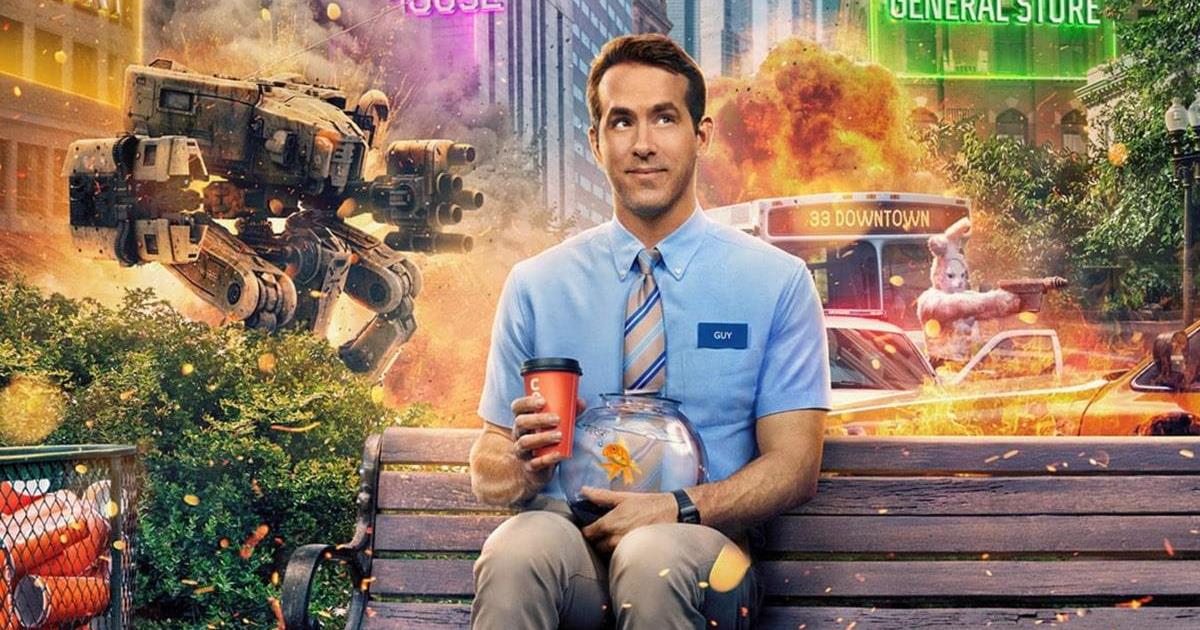
Paul Cameron, director of photography of the new movie Reminiscence, was wary of pushing his own “look” ideas while he and writer/director Lisa Joy planned the film’s visual direction. Being that it was her first feature film, he felt it was important “not to impose my aesthetic during the conceptualization of the film. I wanted Lisa to find her way with the material.”
Reminisence’s plot certainly opens the door for some dynamic visuals. The storyline involves a future world that has been decimated by rising water levels and unbearable heat, leading to riots as people struggle to survive among a world divided into “haves” and “have-nots.” The only thing that brings happiness to people is to relive their memories, in what is known as the Nostalgia Machine. Nick Bannister, the lead character, played by Hugh Jackman, controls the machine.
The movie was also to be shot with a near-future noir design. So we have the familiar tropes of a femme fatale (Rebecca Ferguson), a faithful friend (Thandiwe Newton) and a general condition that affected everything and everybody; the extreme heat of Miami and New Orleans were perfect for the role.
Cameron and Joy had referenced the movie Body Heat and liked that external force of the hot weather on the characters. “Lisa was very specific that the world during the day should feel unbearable with the heat, and that needed to be shown visually. She asked me to keep the skin tones and general feel as warm as possible.”
Despite initial conversations about shooting on film, Cameron chose the Sony VENICE camera, as he told Suzanne Lezotte at the Sony Cine website. “I needed to shoot at a higher ISO and lower light levels for live projection for the Nostalgia Machine scenes. I knew it was the right camera for the film. The 2500 ISO base is extraordinary.”
READ MORE: Paul Cameron, ASC Captures the Futuristic Look of “Reminiscence” (Sony Cine)
He paired the VENICE with Cooke anamorphic full-frame lenses, “which have a timeless character to them, favoring a vintage look,” he explained. “I love the way they render faces in close-ups.” He used one additional lens, a TODD AO 2X vintage 38mm anamorphic lens, “because it has a unique flair characteristic; it’s a very active lens. That was for the reminiscing scenes,” he said.
One of the biggest challenges of the movie was to visualize the Nostalgia Machine in action. Cameron chose a complicated projection system that he had experimented with a few years prior using various semi-transparent screens. For Reminiscence he designed the projection system to create an illusion, knowing one of the challenges would be low light levels. “I built a 280-degree Hologauze Projection Screen with a 20-foot diameter and projected the memory footage live with three 20K projectors. The images were then mapped to blend onto the circular Hologauze screen.” This created a powerful illusion, “so I had to use a higher ISO and shoot at 2500, which was a substantial amount more than I thought I would shoot at.”
Cameron explained to Indiewire that there was a missing piece that would improve the projection’s quality. “There was a crucial visual effects component to completing the Reminiscence footage, supervised by Bruce Jones, who worked with Scanline VFX,” he said. “The Hologauze is not like an IMAX screen. You’re laser-projecting onto this fabric that has been stretched into this curved shape that’s a little out of focus. Bruce gave me digital maps of all the projection so they were able to roto these maps and overlay them to enhance [the memories], which we perfected in the DI.”
A lot of the texture was also added later by VFX in post because director Joy wanted to have memories look like strings of beads. “We tested projection onto string beads but went with Hologauze and CG enhancement of strings,” he added.
Shooting the images needed for the Nostalgia Machine, as well as the actors, posed other problems for Cameron. “When you are on set, and seeing a character and projecting it, the actual shot and horizon line need to line up in a different kind of projection, called frustum projection.
“Here the projection was meant to feel as if they were perfect memories that were integrated into the set itself. It meant shooting not only the live action scenes playing out in the Nostalgia Machine, but where Jackman would be on the set. In a scene, he is walking around, with a POV here, and then a rear high-angle shot. Essentially, we had to shoot practicals as well as the rear projection, utilizing three cameras and two setups.”
READ MORE: ‘Reminiscence’: Creating a Visual Mindscape for Lisa Joy’s ‘Analog Noir’ Worthy of Hitchcock (IndieWire)
Cameron enlisted the help of colorist Dave Cole at Fotokem, whom he had worked with on Season 3 of Westworld. “I wanted a very photographic analog look for the film and Dave helped me with that. Unfortunately, our DI happened during the pandemic and Dave was working on Dune, so I ended up going to Shane Harris at Picture Shop.” Cameron was able to work out a collaboration between Fotokem and Picture Shop using the Garry Marshall Theatre, and finishing the HDR with Cole.
Production finished shooting the film in 54 days, a day earlier than planned, to which Cameron gave kudos to the production team, noting he had the support of great ADs and producers who understood what the challenges were. “For as long as I can remember, this is the only film where nothing was shot after principal photography. We shot all the inserts and additional photography as we went.
“Often times, Lisa came with an idea on set that seemed out-of-the-box. Little did I know she saw all those shots and cuts in her mind and knew she wanted these heightened emotional moments for the edit. The end result of the way it looks on film is very close to what Lisa conceived,” he said.
Reminiscence is streaming on HBO Max and in theaters now.
Want more? In the video below, watch cinematographer Paul Cameron, ASC discuss the making of Reminiscence for the Sony Cine YouTube channel:
You can also watch Lisa Joy in conversation with Collider’s Steve Weintraub about the making of Reminiscence, including how Hugh Jackman supported her as a first-time filmmaker and what people might be surprised to learn about him, as well as the challenges of making her feature directorial debut.



















